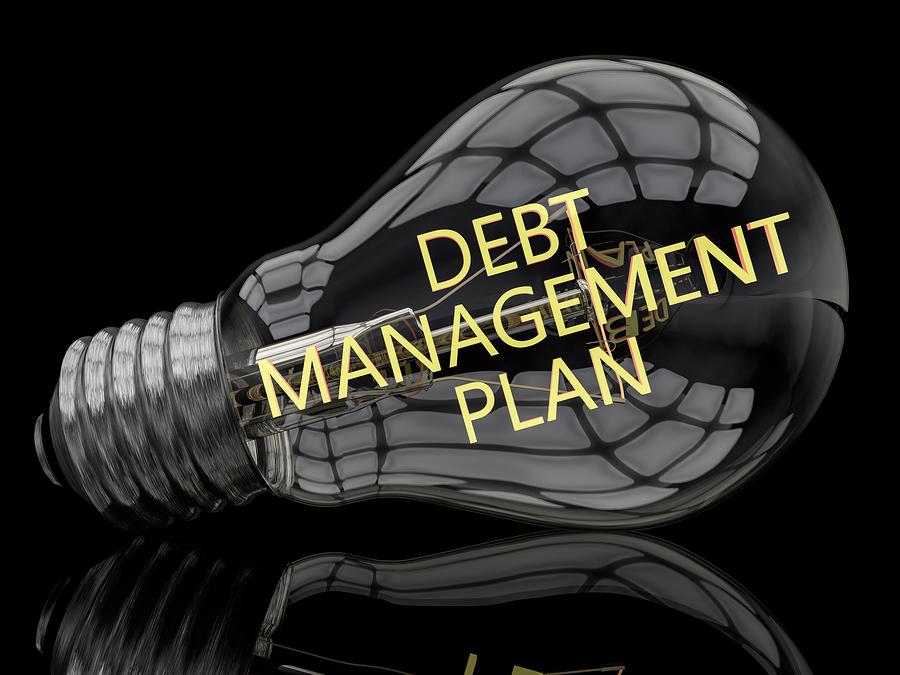Budget Like a Pro: Top Budgeting Strategies That Actually Work Mastering your finances begins with one simple principle: budgeting. Yet, the word “budget” can evoke images of austerity and deprivation. In reality, effective budgeting strategies empower you to spend intentionally, save reliably, and invest for the future—all while enjoying life’s pleasures. Whether you’re a newbie ledger keeper or a seasoned spreadsheet savant, this guide delivers a treasure trove of actionable tactics. Long sentence follows with panache: from time-honored envelope systems to cutting-edge apps that automate every penny, you’ll discover methods to sculpt a resilient financial future and banish money-related stress for good.

Why Budgeting Matters
Smart budgeting transforms chaotic cash flows into clear pathways. When you allocate dollars with purpose, you thwart impulse overspending and ensure essentials are funded. You build an emergency cushion to withstand life’s curveballs—job loss, medical emergencies, or unexpected travel. More importantly, you gain freedom: the liberty to pursue passions, whether launching a side hustle, traveling the globe, or retiring early.
Short sentence for emphasis. Discipline feeds opportunity.
1. Zero-Based Budgeting: Assign Every Dollar a Job
H2: The Blueprint for Full Control
Zero-based budgeting (ZBB) demands that your income minus expenses equals zero each month. Every dollar is assigned to a category—bills, savings, discretionary spending—leaving no funds unaccounted for.
- Step 1: Tally Your Income
Include salary, side gigs, dividends, and any irregular inflows. - Step 2: List Fixed Expenses
Rent, utilities, insurance, loan payments—commit these funds first. - Step 3: Allocate Variable Costs
Groceries, transportation, entertainment—estimate based on past spending. - Step 4: Fund Financial Goals
Emergency fund contributions, retirement accounts, debt payoff. - Step 5: Cap Discretionary Spending
Dining out, hobbies, subscriptions—set firm limits.
At month’s end, adjust allocations based on actuals. ZBB’s granularity uncovers waste and optimizes every dollar.
2. The Envelope System: Cash-Only Discipline
H2: Tangible Limits for Temptation
Popularized by personal finance guru Dave Ramsey, the envelope system channels cash into labeled envelopes for each spending category. When the envelope is empty, spending stops until the next cycle.
- Essentials Envelope: Groceries, household supplies.
- Lifestyle Envelope: Dining, entertainment, gifts.
- Fuel Envelope: Transportation costs.
- Miscellaneous Envelope: Unexpected small expenses.
Digital hybrid: Use budgeting apps with “envelope” features or prepaid debit cards allocated by category. The tactile act of handing over cash instills fiscal mindfulness.
3. The 50/30/20 Rule: Simple, Balanced, Effective
H2: Proportional Allocation for Balanced Living
For those seeking structure without micromanagement, the 50/30/20 rule offers a robust starting point. Distribute after-tax income as follows:
- 50% Needs: Housing, utilities, groceries, transportation.
- 30% Wants: Dining out, travel, subscriptions, lifestyle upgrades.
- 20% Savings & Debt Repayment: Emergency fund, retirement contributions, extra debt payments.
Adjust ratios based on personal goals. High-cost living areas might necessitate a 60/20/20 split, whereas aggressive savers might pursue 50/20/30. This method ensures essentials are covered, life remains enjoyable, and wealth accumulates.
4. Pay Yourself First: Prioritizing Prosperity
H2: Savings as a Non-Negotiable Expense
Treat savings like a monthly bill. Automate transfers to retirement, brokerage, or high-yield savings accounts on payday. By paying yourself first, you avoid the temptation to spend what remains.
- Automatic Transfers: Set up biweekly or monthly moves.
- Percentage-Based Contributions: Aim for 10–20% of gross income; ramp up over time.
- Goal-Driven Savings: Label accounts—“Emergency Fund,” “Vacation,” “Home Down Payment.”
This inversion of the traditional “save what’s left” mindset turbocharges net worth growth.
5. Debt Avalanche & Debt Snowball: Twin Paths to Freedom
H2: Choose Your Philosophical Approach
Debt Avalanche focuses on tackling high-interest obligations first, minimizing total interest paid. Mathematically optimal, it demands discipline.
- Step 1: List debts by APR, descending.
- Step 2: Pay minimums on all accounts.
- Step 3: Channel extra funds to the highest-rate debt until zero, then move to the next.
Debt Snowball accelerates motivation by paying the smallest balances first, regardless of rate.
- Step 1: List debts by balance, ascending.
- Step 2: Pay minimums across the board.
- Step 3: Direct surplus funds to the smallest debt, celebrate wins, then tackle the next.
Whether driven by efficiency (avalanche) or psychology (snowball), both methods integrate seamlessly into any budgeting strategies playbook.
6. Round-Up and Micro-Saving Apps
H2: Harness Spare Change for Macro Gains
Technology offers effortless automation: apps like Acorns, Qapital, and Chime round everyday purchases up to the nearest dollar, investing or saving the difference. This “micro-saving” approach leverages small, consistent increments.
- Automated Rounding: 87 cents becomes $1.00; 13 cents accrues.
- Custom Rules: Save $5 every time you order takeout, or round up by 50% for every online purchase.
- Investment Options: Choose conservative portfolios for emergency funds or aggressive allocations for retirement.
Over time, these nickels and dimes morph into substantial sums—proof that modest habits yield mighty outcomes.
7. Side Hustles: Amplify Income, Accelerate Goals
H2: Monetize Skills, Passions, and Time
Boosting income amplifies every budgeting strategies advantage. Explore avenues:
- Freelance Services: Graphic design, copywriting, consulting on Upwork or Fiverr.
- Gig Economy: Rideshare driving, food delivery, pet sitting.
- Digital Products: E-books, online courses, stock photography.
- Rental Income: Spare room on Airbnb, garage parking, gear lending.
Allocate 100% of side-hustle earnings toward debt reduction or goal-specific savings. This turbocharges progress and shortens timelines.
8. Subscription and Bill Audits
H2: Cull the Hidden Leaks
Recurring charges can silently erode budgets. Conduct quarterly audits:
- Review Bank Statements: Spot subscriptions you forgot—streaming services, SaaS products.
- Evaluate Value: Cancel underutilized or redundant subscriptions.
- Negotiate Bills: Call cable, internet, or insurance providers to secure better rates.
These small adjustments free up cash for priority categories in your strategic budgeting matrix.
9. Mindful Spending: The Pause-and-Plan Approach
H2: Combat Impulse with Intention
Implement the 24- or 48-hour rule: postpone non-essential purchases to gauge true desire.
Long sentence: If, after the cooling-off period, the urge persists and aligns with your budgetary goals, proceed—otherwise, chalk it up as a fleeting impulse and let it go.
By decoupling emotion from expenditure, you curb wasteful whims and reinforce fiscal discipline.
10. Leverage Technology: Apps and Tools
H2: Digital Allies for Fiscal Mastery
- YNAB (You Need a Budget): Zero-based budgeting app that enforces category-by-category control.
- Mint: Aggregates accounts, tracks spending, and identifies trends.
- Personal Capital: Bridges budgeting with investment tracking and net worth analysis.
- PocketGuard: Shows “In My Pocket” disposable cash after bills and goals.
Select tools that resonate with your workflow. Integration reduces friction and fortifies your commitment.
11. Regular Review and Adaptation
H2: Evolve with Life’s Changes
Budgeting isn’t a “set it and forget it” exercise. Revisit your plan monthly and quarterly:
- Annual Salary Adjustments: Automate savings bumps when you earn more.
- Life Events: Marriage, childbirth, relocations demand recalibration of categories and targets.
- Market Conditions: Interest rate shifts or inflation may necessitate strategy tweaks.
This iterative approach ensures your budget remains a living document—responsive, relevant, and resilient.
12. Psychological Anchors: Habits That Stick
H2: Cultivate a Winning Mindset
- Accountability Partners: Share goals with trusted friends or financial forums.
- Visual Trackers: Debt thermometers, savings charts, or habit calendars.
- Micro-Rewards: Celebrate category victories—completely funding your grocery envelope or hitting your weekly saving target.
These rituals transform budgeting into an engaging journey rather than an onerous chore.
13. Advanced Techniques: Cash Flow Levers
H2: Fine-Tune for Maximum Velocity
- Biweekly Payments: Splitting monthly bills into two halves adds an extra payment yearly—shrinking loan terms.
- Debt Snowflaking: Channel windfalls—bonuses, tax refunds, gifts—directly into debt or savings.
- Cash-Back Incentives: Use reward credit cards sensibly; funnel rebates into your savings goals.
- Side-by-Side Accountability: Mantain a separate “fun fund” to prevent budget fatigue while keeping core goals intact.
Implement these levers judiciously to accelerate momentum without introducing complexity that undermines adherence.
14. Common Pitfalls and How to Avoid Them
H2: Navigate Around Budget Busters
- Phantom Progress: Don’t mistake minimum payments for substantive progress on debt. Always apply extra funds to principal.
- Lifestyle Creep: As income rises, avoid upward spirals in spending. Automate saving and treat raises as opportunities to boost financial goals.
- Analysis Paralysis: Excessive tweaking can stall action. Choose a robust, sustainable system and refine gradually over time.
Anticipate these traps and equip yourself with preemptive strategies for steadfast success.
15. The Long-Term View: Compound Benefits
H2: From Monthly Plans to Lifelong Prosperity
Effective budgeting strategies converge on a singular objective: building lasting wealth and security. Through disciplined allocation, income optimization, and continuous calibration, you harness the twin engines of compound interest and consistent action.
Short sentence: Over years and decades, the cumulative impact of your budgeting decisions compounds into transformative results. Imagine decades of balanced spending, stable savings, profitable investments, and debt-free living—each fueled by the strategies mapped out above.
Conclusion
Budgeting like a pro isn’t about denying yourself indulgences; it’s about orchestrating your financial life with intention and flexibility. By integrating zero-based budgeting, the envelope system, 50/30/20 allocations, and “pay yourself first” discipline, you forge a robust framework. You amplify income through side hustles, streamline expenses with audits, and harness technology to automate success. You cultivate the psychological habits and advanced tactics that sustain progress. Regular review ensures your plan evolves with life’s twists.
Deploy these top budgeting strategies with consistency and cheer. Watch as stress diminishes, savings grow, and financial freedom draws near. The path to prosperity starts with one step—your first budget, crafted and launched today.















